Digital transformation doesn’t happen overnight. Your first step as the digital project champion is to develop a sound and practical roadmap to lead your organization through this journey. We help executives and marketing teams do just that.
Our digital roadmapping study takes a 360° look at your business. The purpose is to understand your goals, your existing digital ecosystem, and your customers’ expectations so that you can develop a more robust business plan backed by data.
More often than not, the reason you’re embarking on digital transformation is because you need to move your business forward to be more flexible and scalable. In doing so, you can improve customer experiences, open new revenue channels, and increase profitability. Perhaps your plan involves a new website with ecommerce capabilities. Or maybe you want to invest in new marketing technology that will help you win new customers and shorten your sales cycle. Regardless, digital transformation initiatives often affect multiple functions and processes throughout your business. So, if you’re at the helm of digital change, be sure you are prepared to navigate such a complex and multifaceted project.
What do you get with a digital roadmapping study?
Every engagement is custom. At a high level, each study involves customer research, requirements gathering, a competitive audit, and industry analysis. The deliverable is a comprehensive presentation of your current state, recommended path forward, the risks and tools you will need to reach the finish line, and a multi-year plan of attack.
Stakeholder interviews
We begin every research engagement with stakeholder interviews with teams across your organization—marketing, sales, product development, operations, IT, legal, finance, and more. We’ll also want to interview your value chain partners, such as distributors and dealers, and ideally some of your end customers.
We do these interviews to gather business, technical, and marketing requirements that inform your digital ecosystem. This process also reveals expectations and requirements for the project, from c-suite level project sponsors to data specialists to downstream partners. The last thing you want to do is overhaul everything without knowing how it could affect your partners or customers.

(Side note: Stakeholder interviews are also a great way to objectively bring forth team member concerns to a decision-making audience. Our third-party role can be an effective neutral channel for internal alignment, and it’s another benefit of stakeholder interviews.)
Customer segmentation
Today’s digital world is driven by personalization, automation, and instant gratification. You can’t build a best-in-class digital experience without knowing your customer intimately and striving to deliver a great online experience. But no two customers are the same. This step is one of the most critical pieces of the digital roadmapping study.
Our tri-dimensional customer segmentation study is a survey sent to your direct customers, designed to objectively gather data about their needs, attitudes, and behaviors. This information is like gold when developing a digital strategy.
Do your B2B customers want ecommerce? Are they satisfied with the current digital experience? What information do they need at what point of the conversion process? Each question is designed to capture pertinent answers that will shape your digital strategy.
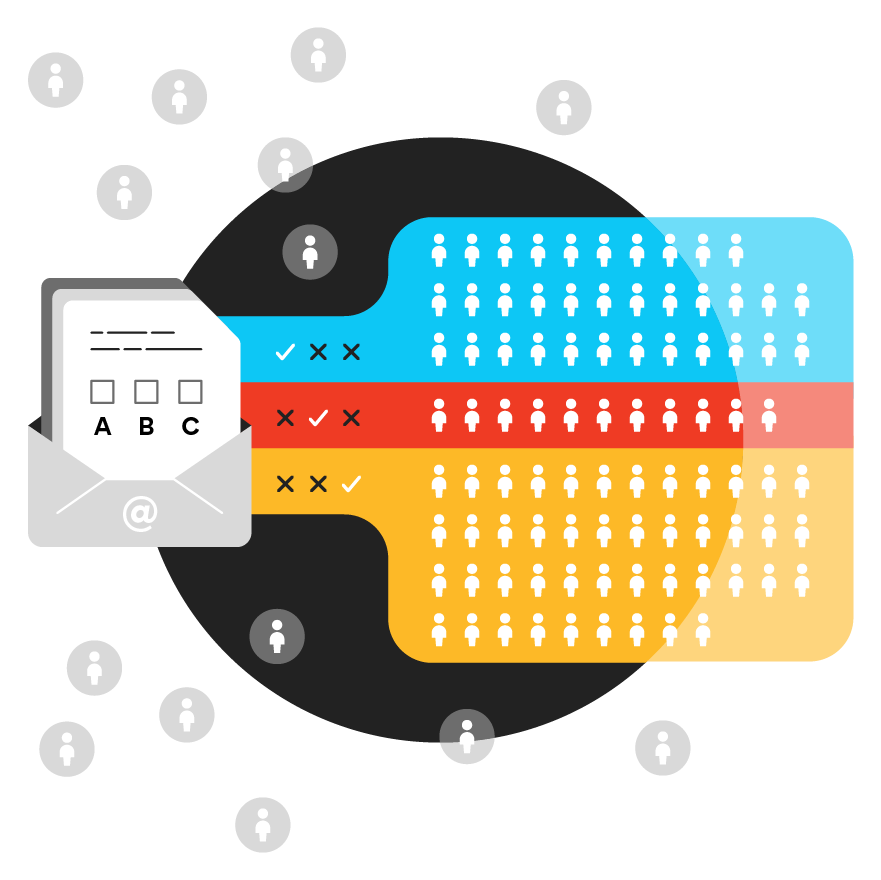
(Note: We are a SurveyMonkey Power User and use this tool to deploy our customer segmentation surveys. Check out our Leveraging customer data to help businesses win big blog to read more about our methodology.)
Once the data is collected, we deploy a deductive analysis process to identify statistically significant customer segments. Why? Because it’s important to learn how your customer segments differ, what each group expects from you, and what you can do to optimize their experience. Happy customers = more money.
In countless customer segmentation surveys, we’ve unveiled millions in potential revenue. We’ve revealed risk points in how businesses operate, and we’ve identified how much our clients should be investing in digital vs. traditional channels. Customer segmentation studies are designed to meet the needs of your specific business, and the results shine a light on the needs of your target audience.
Persona and customer journeys
After we’ve analyzed your customer data, we develop custom persona profiles and customer journey maps for each of your unique customer segments. These are valuable tools that your sales and marketing teams can use for years to come—in content development, to prep for sales calls, and to inform your website’s user experience (UX).
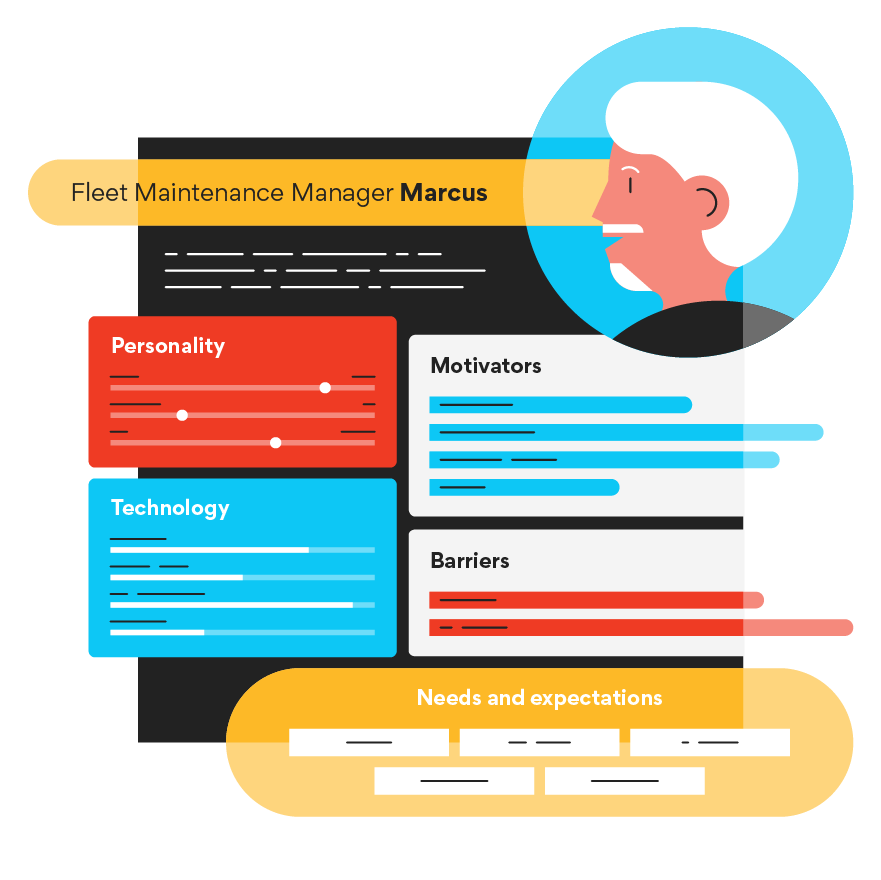
Our persona profiles include a brief narrative about your customer segment—their role, what drives them to purchase, any barriers that prevent them from converting. Some agencies fill personas with fluffy heuristic details that aren’t actionable. We take pride in basing our personas and customer journey maps on the qualitative and quantitative data we collect through primary research. That makes these deliverables valuable, in that they help your team get inside the head of your most important audiences. They aren’t meant to be stored in a drawer and forgotten; they’re meant to be used on a regular basis to keep your unique audiences top of mind in everything you do.
We then combine key insights from stakeholder interviews and survey data to develop visual journey maps. These tools show in more detail the path each customer segment takes with your brand. What are their questions, motivators, and barriers at each stage of the conversion funnel? How does one segment compare to the other in terms of channels used and information sought? Customer journey maps summarize how each segment shops and what steps your organization could take to improve their experience.
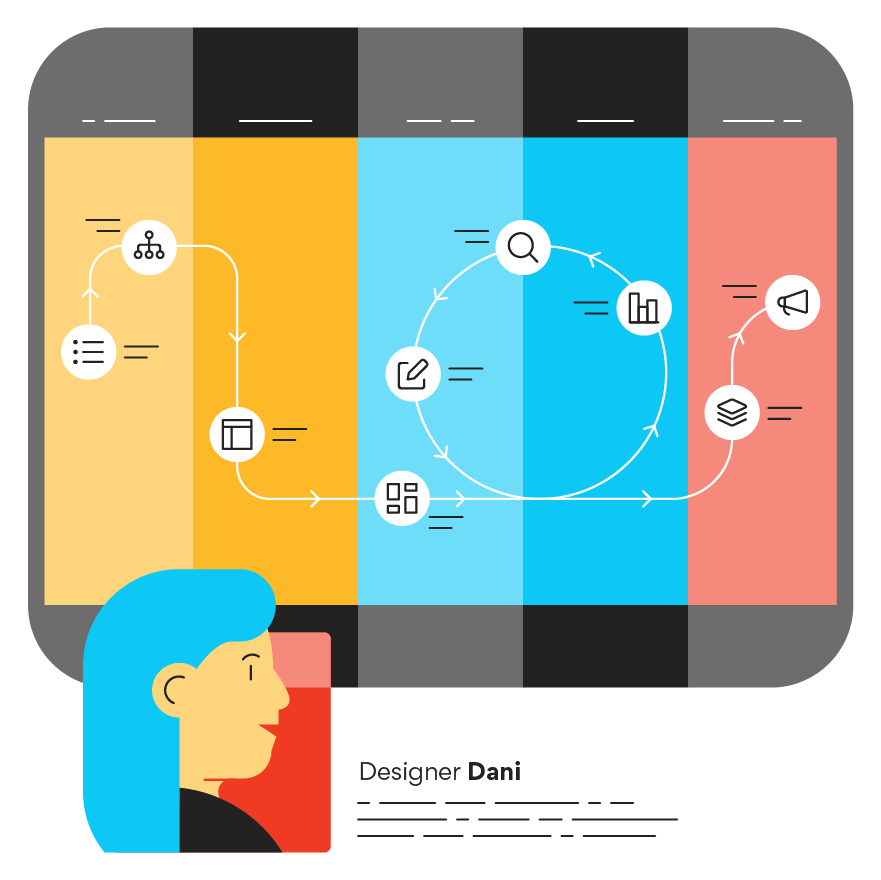
Personas and customer journey maps are both snapshots in time of your customer segments. We recommend our clients revise and amend both tools over time as they learn more—and we recommend surveying your customers every one to three years. If updated and used correctly, these small but mighty slides can be invaluable tools for sales, marketing, and product development.
Competitive analysis
No roadmap is complete without a solid understanding of their competitive set. Based on your business goals and customer data, we conduct a thorough analysis of your industry competitors. We specifically analyze how your competitors operate online, the customer experience they provide, and where they might be leading the industry. We audit multiple digital channels. We can call your customer service center. We can audit your ecommerce checkout, overall brand experience, the tone of your content, your key conversion points, and much more. The goal in competitive analysis is to understand where your business fits inside the competitive set and identify your most profitable optimization opportunities.

For all businesses looking to grow, we recommend some level of competitive analysis to develop a benchmark and assess what you need to achieve to outperform others in your industry.
Industry analysis
Businesses undergoing digital transformation must have a thorough understanding of their industry. We tailor this analysis to what you’re trying to achieve with digital. We take a look at broader trends and provide context to how each may affect your digital investments. For instance, selling online hasn’t always been viewed as a necessity for OEMs. But today, thanks to the Amazon effect and catapulted by COVID-19, manufacturers must provide an easy way for customers to transact online.
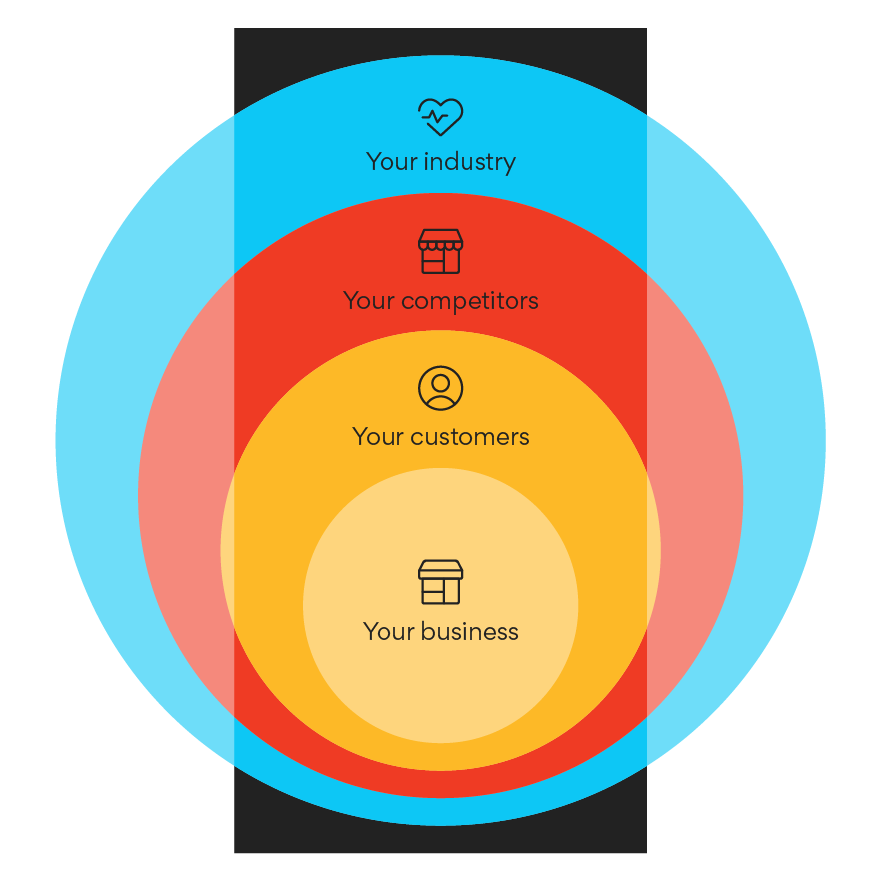
Each industry analysis reveals forces that could affect your business.
Technical digital strategy
And now to the nitty gritty of digital transformation—the technical strategy.
How do you decide which platforms to adopt? What must you consider as you take the plunge into ecommerce? How does your business successfully migrate systems? What processes must change as you create this new digital ecosystem?
Your technical digital strategy must be informed by your customers, your value chain partners, your internal team’s requirements, and your business goals.
In your roadmapping study, we have many tools in our toolbox to answer your biggest questions. We may conduct a code audit to determine what it will take to update or migrate your website. We often conduct platform evaluations—which ecommerce platform or PIM system is right for you? In addition to code, we can audit product data, hosting environments, you name it. We can even have agency transition plans in place to help the knowledge transfer go as smoothly as possible.
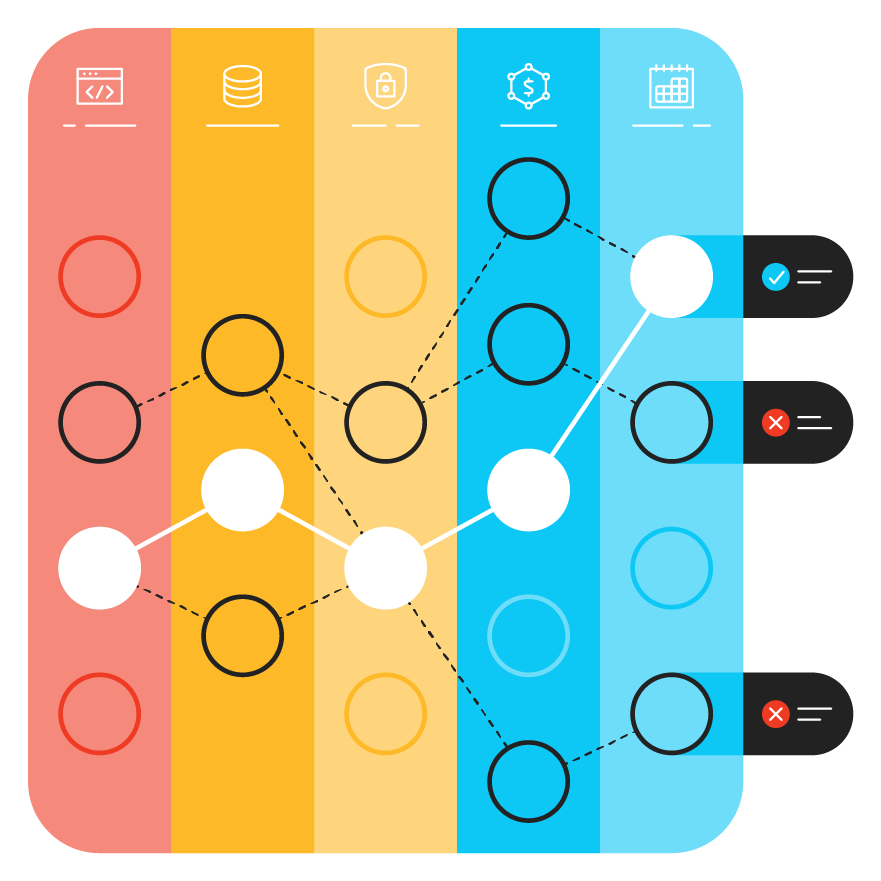
Read more about our technical digital strategy development.
Risk documentation
We’re not shy about pointing out the risks we identify through the our research. At times, we’ve had to present the exact opposite of what our clients wanted to hear. But we do it because honesty is critical to long-term success. With every roadmapping study, we identify the risks associated with implementing (or not implementing) each of our recommendations—and the steps you need to take to avoid or rectify them.
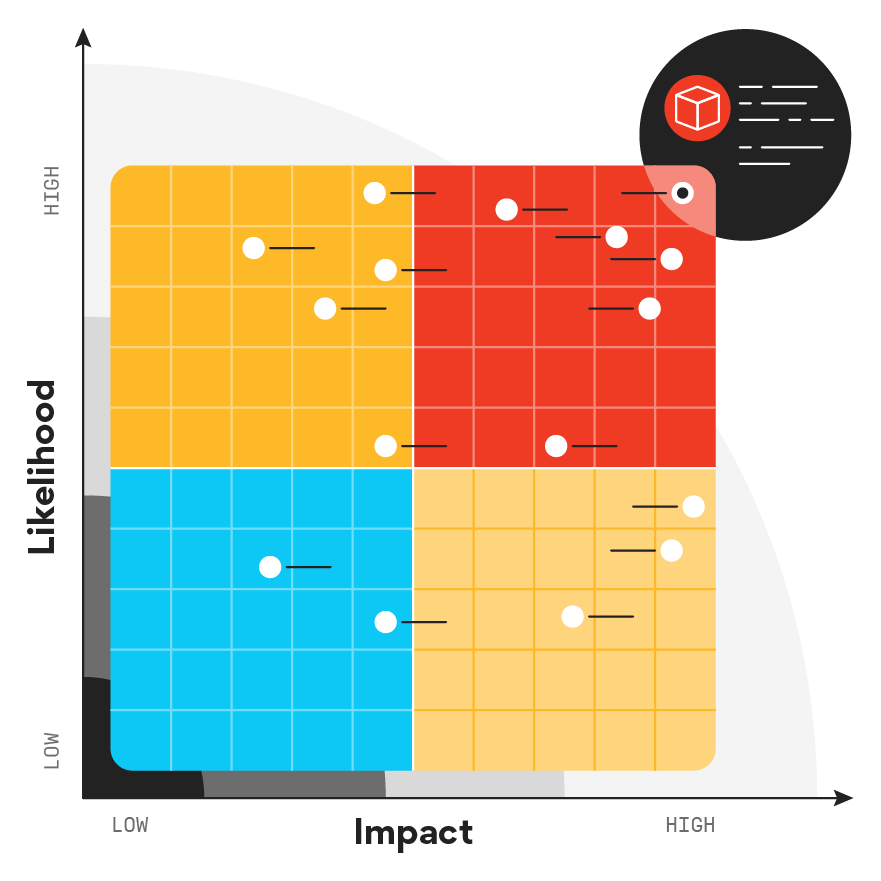
Don’t present any research findings to executive leadership without your risk register!
The final deliverable
The culmination of the digital roadmapping study is a comprehensive presentation of key findings, data, customer profiles, risks, and strategic recommendations. Many of our reports include a three-year roadmap (because Rome wasn’t built in a day).
We detail the key investments we believe will be most advantageous for your business. We will make CAPEX and OPEX recommendations, such as product data engagements, a website redesign, or managed digital services retainers. We often go outside our own swim lanes to recommend organizational adjustments, new hires, and services we don’t offer—whatever we see in the data that we believe will move your business toward its goals.
We’ll deliver a full findings report to your key stakeholders, as well as an executive report to pass up the ranks. Many digital transformation project champions use this presentation to advocate for strategic investments and resources, with statistically significant data to back it up. At one global OEM client, the report was used at a downstream event for dealers and distributors to prove that digital transformation would be profitable for everyone.
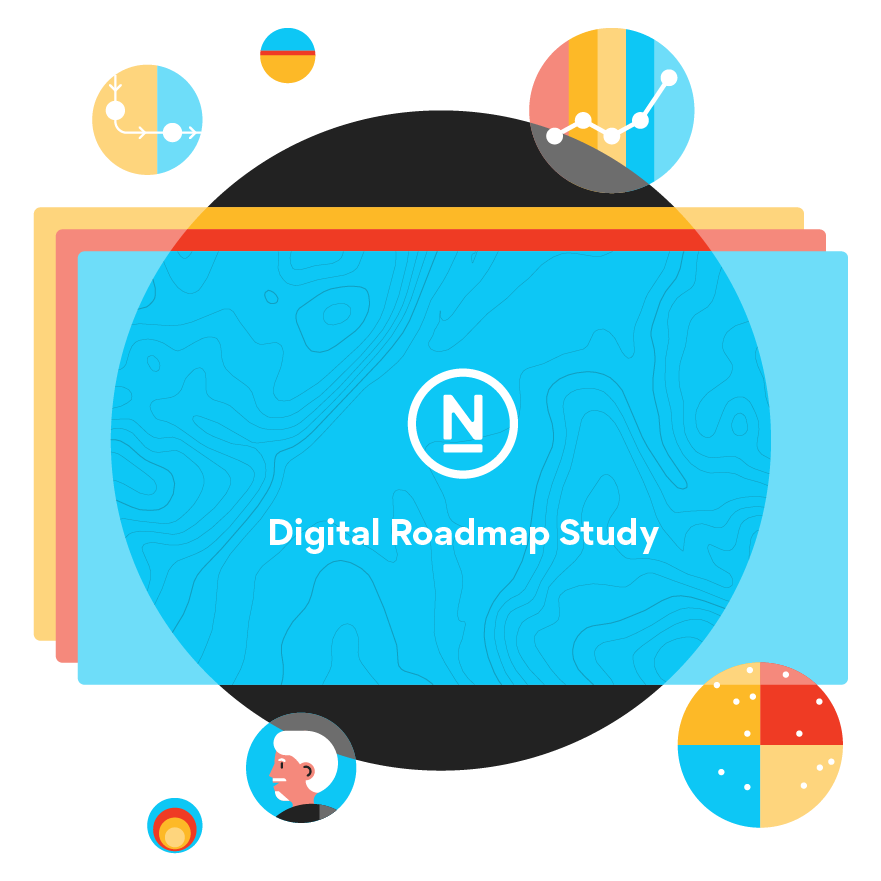
Whatever you decide to do with your digital roadmap is up to you, but we’re here to help. If you’re planning to invest in digital transformation, the best thing you can do is work to understand your data, identify risks, and develop a plan to move your business forward.
Is your business considering a major digital initiative? We can help you make strategic decisions backed by data. Talk to us about your own custom roadmapping study.